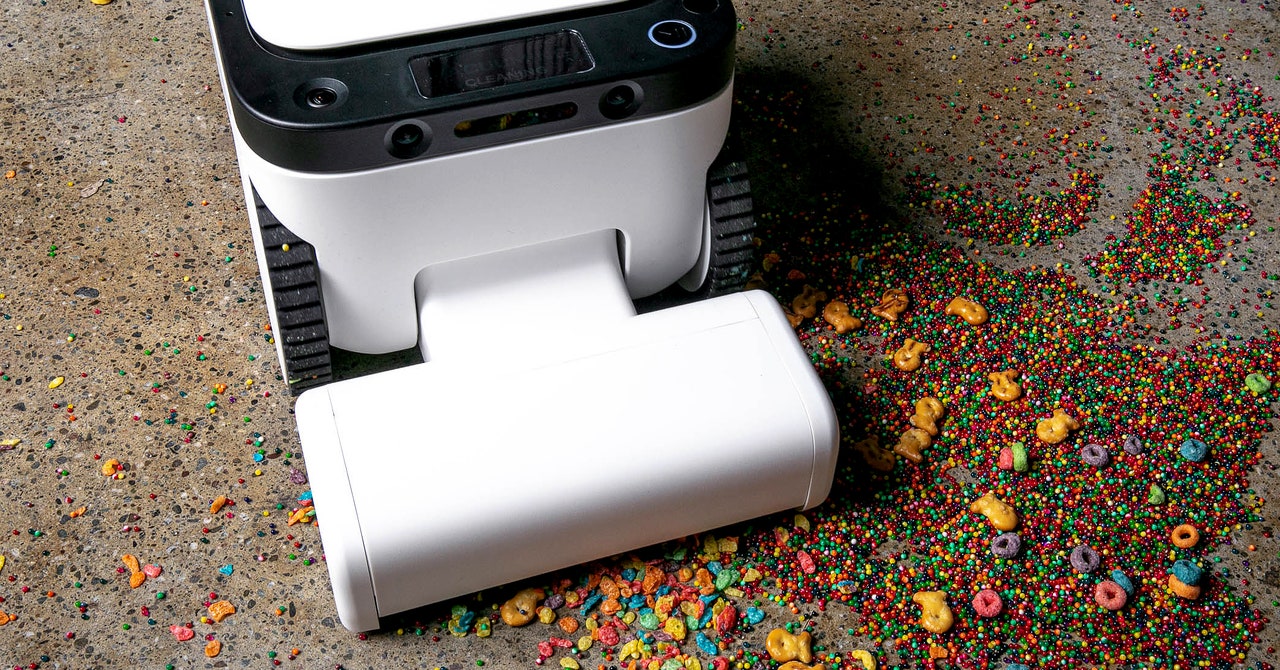
Within a few minutes of arriving at the WIRED offices in San Francisco, Matic cofounder Mehul Nariyawala brings up the classic Paul Graham piece on schlep blindness. The essay talks about how engineers will often shrink away from starting a company to tackle a very commonly understood problem simply because solving that problem would require too much work. They don’t want to schlep, so they put aside the world-changing idea and instead just go build something easy.
We’re watching the prototype, Matic, slowly work out whether the color differentiations of the concrete floor in the WIRED offices actually signal whether it’s moving from hardwood to carpet. I ask Nariyawala why so many startups compete to create a self-driving car when the problem of creating a simple, effective, yet affordable robot vacuum is right there waiting to be solved.
“We had a chance to work on Waymo,” Nariyawala says, referring to himself and his partner Navneet Dalal, both former Google engineers. (Nariyawala has a degree in bioinformatics and headed Google’s Nest Cam division; Dalal was a senior research scientist at Google Nest.) “But if you make a mistake in a self-driving car, you die … You don’t develop true level 5 intelligence from avoiding mistakes. Intelligence comes from learning from your mistakes, instead of being mistake-free.”
The home—especially a chaotic one, with kids and pets—is an incredibly dynamic environment, and the home cleaning space is ripe for disruption. So why hasn’t the robot vacuum changed in design since the 1990s? Matic aims to have a solution to this problem on the market by early 2024. The robovac that we’re watching tool around on the floor is a late-stage prototype. So far, it looks pretty good.
A Cuddly Cleaning Companion
I love robot vacuums. I’ve tested them for years. But as my colleague Simon Hill notes, even after years of development, they still come with an array of problems that no one has solved. The bins are tiny and the self-emptying stations are enormous. Navigation systems that use cameras can be a potential invasion of privacy. You still have to pick up the floor to remove things that could be potential robot vacuum booby traps. This is the imperfect wilderness Matic hopes to tame.
Rather than try to make incremental improvements on the classic robot vacuum disc, Nariyawala and Dalal thought up a new design for a more human-oriented robot vacuum-mop. That entailed changing the entire shape of the vacuum to a white, curved robot, like the egg-shaped probe from Wall-E or the Jibo (RIP). “Kids are afraid of [the Roomba],” Nariyawala says. “We didn’t want kids or dogs to be scared of it.”
Video: Wired Staff
Its edges are squared off to let it clean corners effectively, and it has robust wheels to travel throughout the house on all different floor surfaces. Rather than coming to rest in an enormous self-cleaning docking station, it’s taller to accommodate a much larger battery, a clean water reservoir for the mop, and—this actually blew my mind—a disposal bag with both charcoal and diaper salts to pick up both wet and dry messes at the same time. I hadn’t seen this in a robot vacuum. Cleaning a dirty water tank clogged with solid debris is so unpleasant that I always do a preliminary vacuum run before mopping. It never occurred to me that you could do both at once.
The next achievement of the Matic hardware lies in the realization that suction power does not always mean your floor will be cleaner. For years, most robot vacuums have been introducing more and more suction power, but all that means is you’re usually just balding your carpets, Nariyawala says with a shrug. Instead, the Matic focuses on more effective agitation of the cleaning surface, with a roller brush whose flippers are much longer than normal. Matic’s mop also lifts over an inch off the surface of the ground, so it doesn’t inadvertently drag a damp cloth over your rugs and carpet.
Finally, the vacuum is much, much quieter than almost every vacuum I’ve tested—a mere 55 decibels, or the level of a quiet conversation, versus a much more disruptive 75 decibels, which is, sad to say, about the volume of a lawn mower. All this is in a robot whose battery lasts through about two and a half hours of vacuuming and three hours of mopping.
Services Marketplace – Listings, Bookings & Reviews
